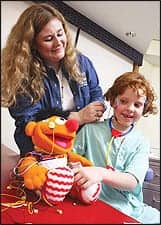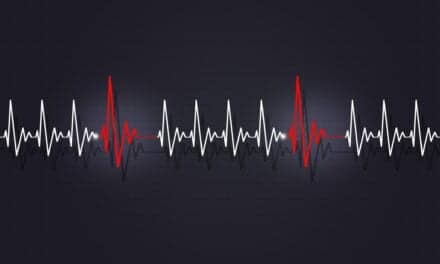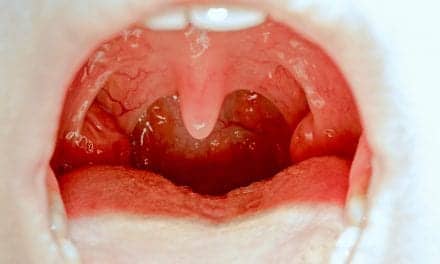As more research links obstructive and central sleep apnea to AFib, some take steps toward systematically screening patients.
There are many patients with undiagnosed sleep apnea who present with heart problems in the noninvasive cardiology practice of Ronald Wharton, MD. Throughout most of his career, Wharton screened for the sleep disorder in an ad hoc way. For example, he referred a young lawyer with atrial fibrillation (AFib) for sleep testing after connecting the dots that the patient’s weight of about 300 lbs and lack of family history of cardiac problems suggested an underlying sleep-breathing disorder.
“I said to him, ‘I think I know your problem.’ Sure enough, he had obstructive sleep apnea,” Wharton says. “That was for me an index case.”
For the past 2 years, Wharton and his cardiology colleagues at Montefiore at 1250 Waters Place in Bronx, NY, have used questionnaires to systematically screen all of their patients for sleep apnea. This protocol comes amidst growing evidence that screening for sleep apnea in patients with AFib, and the counterpart of screening for AFib in patients with sleep apnea, result in better outcomes.
Research on AFib and Sleep Apnea
Atrial fibrillation is a heart rhythm disorder in which the heart’s upper chambers contract irregularly. Some patients have symptoms while others do not. AFib ups a person’s risk of stroke by a factor of almost 5,1 so finding and treating it is important.
Research linking AFib to sleep apnea—both obstructive sleep apnea (OSA) and central sleep apnea (CSA)—has been steadily increasing. But awareness that sleep apnea is a risk factor for AFib so far remains low. A survey of 1,013 Americans released by digital health company iRhythm in 2014 found that while nearly half are aware that the risk of developing AFib is increased by a family history (48%) and high blood pressure (43%), only 16% knew that sleep apnea is also a risk factor.2
Meanwhile, treating obstructive sleep apnea can improve AFib outcomes, studies have found. A meta-analysis published in 2015 linked CPAP use with a 42% relative risk reduction in AFib recurrence in patients with OSA, regardless of their primary treatment.3 “Active screening for obstructive sleep apnea in all patients who undergo treatment for atrial fibrillation is imperative as the use of CPAP will influence the outcome of therapy and likely reduce some of the cardiovascular morbidity associated with atrial fibrillation,” said study author and electrophysiologist Larry A. Chinitz, MD, in a release at the time.
Among research that links central sleep apnea to AFib is a prospective observational study published in 2016, which found that patients with CSA are at greater risk of developing AFib later.4 The study purposely looked at an older cohort (mean age of 75) due to the increasing prevalence of AFib with age. “The findings were much stronger in those who were in the older subgroup of this already old cohort,” says senior investigator Reena Mehra, MD, MS, a sleep physician at the Cleveland Clinic, in a phone interview, noting that both strength and magnitude of the findings were stronger in the older subgroup. The authors state that further investigation is needed to determine whether treatment of the CSA improves the health of patients with AFib.
Cardiologist Wharton published a study this year that supports systematic sleep apnea screening for all patients in cardiology clinics.5 It found that body mass index (BMI) did not correlate to cardiology patients’ likelihood of sleep apnea or to OSA’s severity (as measured by the apnea-hypopnea index, or AHI) but that the presence of comorbidities did. “Every time you added another comorbidity [diabetes, heart failure, etc], the statistical likelihood of finding OSA went up,” Wharton says via phone interview.
The study concludes that wide screening should be done in at-risk populations. Wharton says, “The cardiologists’ office is the natural place to look for sleep apnea; the patient population is naturally selected for you.” He uses the analogy that not screening for sleep apnea in a cardiology practice is akin to an auto mechanic who fixes 3 out of 4 flat tires on a vehicle and then bids the customer farewell.
Wharton’s findings are in line with the European Society of Cardiology’s AFib clinical practice guidelines issued in 2016, which state, “Interrogation for clinical signs of obstructive sleep apnoea should be considered in all AF [atrial fibrillation] patients.”6
Screening, Referrals, and Diagnosis
Though screening is relatively easy to implement—a sleep questionnaire at intake at the cardiology practice, a thoughtful taking of the pulse during the sleep physician appointment—obstacles can arise during the referral and diagnosis process.
Wharton says it’s challenging to jump through insurance hoops for diagnostic and titration sleep studies and to find sleep physicians for all of his cardiology patients who need one. “When you’re in the inner city, with a lot of patients on Medicaid managed care, it can be very challenging,” he says. “We’re continuing to battle getting the right CPT [Current Procedural Terminology] codes and documentation.” The hospital where he works is not equipped to handle the full volume of sleep study interpretations needed, at times causing delays for patients with comorbid AFib and sleep apnea. When asked if the hospital’s sleep clinicians regularly refer patients suspected of AFib to the cardiologists, he responded that they are not typically screening for it.
Sleep physician Mehra, principal investigator of the study on CSA and AFib, offers several ways that sleep clinicians can check for the heart rhythm disorder. When a patient is diagnosed specifically with CSA, there is sometimes an underlying cause that can be addressed—so heart-related disorders may be investigated then. “When someone presents with CSA, we always try to look for a root cause,” she says, though “we do not always find one.” More generally, with all patients at a sleep practice, clinicians can listen to the heart or take the pulse, taking heed of any irregularities. “If a patient is in persistent AFib, you’d be able to pick that up on the physical exam,” she says, adding that diagnostic testing would be the next step.
To facilitate bidirectional screening, a growing number of manufacturers of diagnostic devices in both fields—cardiology and sleep—have added features and released instructional materials to educate clinicians about the prevalence of comorbid sleep apnea and AFib.
For example, in 2009, monitoring company CardioNet added the clinical indicator of cyclic variation of heart rate (CVHR) to its Mobile Cardiac Outpatient Telemetry system after an 80-patient study found that automated identification of clinically relevant CVHR—a heart rhythm that can be caused by repeated arousals from sleep—was feasible using its system.7 In 20118 and 2013,9 studies were published that employed a different cardiac telemetry system—Cardy Analyzer by Japanese manufacturer Suzuken Company Ltd—adding evidence that CVHR alerts during outpatient heart monitoring can be valuable screeners for moderate to severe OSA. Cardiology patients at risk, according to the CVHR monitoring, would then go for diagnostic sleep studies (either at home or in-lab).
Home sleep testing company Itamar Medical began educating clinicians about the links between sleep apnea and AFib in 2013 when CEO Gilad Glick, MBA, joined. “I spent my first 20 years working for Johnson & Johnson’s atrial fibrillation ablation division. However, still to date, 1-year outcomes, measured in AFib recurrence rate, are a mixed bag with 50% to 60% success rate and a very poor chance to predict which patients will do well,” Glick says in a phone interview. “Then came the ‘aha moment’: I was shown by professor Elad Anter [MD], director of the electrophysiology laboratories at Beth Israel Deaconess Medical Center in Boston, data that explained it all. This seemingly 50% outcome was made up of 2 groups: those with sleep apnea who had a much lower result of <40%, and those without sleep apnea or on an effective CPAP therapy with results of >70%. I realized it is probably sleep apnea causing such a big part of those failed ablations.”10
But motivating action out of education has come in fits and starts. “Cardiology patients are preoccupied with their heart condition and do not understand the link between their sleep apnea and their heart. If not given a motivational explanation by the cardiologist or pressed hard to show up at the sleep doctor, most will not make the extra effort this requires,” Glick says. He thinks that integrating sleep medicine into the AFib pathway is the key to success. “Just like anticoagulant management of AFib patients a few years ago was the general cardiologist’s problem…today it is fully integrated into the AFib care pathways and overseen by the electrophysiologists,” he says.
“Of course, the low reimbursement in the sleep world, from both diagnostics and therapy, makes it much less attractive to cardiologists and, to some extent, the sleep professionals as well to engage in such a seamless care pathway. However, what we see on the ground is that despite those financial challenges, the extent of the clinical benefits that can be seen within a few months is a strong motivation to engage with those programs,” Glick says.
On to Treatment
For patients who do navigate the clinical pathways, Wharton says the AFib and the sleep apnea should be treated in parallel. “It’s nice when you can find a potentially reversible cause of AFib, but obviously you have to treat it until you are confident that it is no longer there…. You don’t want them to be a stroke risk,” he says.
For his part, Wharton avoids scheduling patients at high risk of sleep apnea for ablations. His philosophy is “Wouldn’t it be a lot easier instead to treat the sleep apnea, give them an anticoagulant, and place them on a diet [when high BMI is a factor]?” He notes that for patients with extremely high BMIs an ablation is not a cure-all for their ills. “Even if the ablation works, you’re then left with a morbidly obese patient who is still going to have sleep apnea, hypertension, and a host of cardiac maladies. I think ablation should be for patients who don’t have that comorbidity.”
For patients who have already been diagnosed with sleep apnea who undergo ablation, Itamar’s Glick notes that sleep apnea management is especially crucial in the time immediately following the AFib procedure. “It needs to be ensured that sleep apnea is managed successfully…in what is called the ‘remodeling period,’ a period in which the electrical circuits in the heart muscle are reforming around those ablation RF [radiofrequency] lines,” he says.
Looking to the Future
Ultimately, if the bidirectional screening, diagnosis, and treatment pathway is to become seamless, much of the initiative will come from clinicians themselves.
Lee Surkin, MD, has a unique perspective on communication between sleep physicians and cardiologists because he is board certified in both. He founded the American Academy of Cardiovascular Sleep Medicine (AACSM) in 2012 to help bring both specialties together. “I would suggest that our opportunity and obligation as sleep medicine specialists is to become educated in a more thorough manner on cardiovascular disorders and become proactive in forging relationships with the board-certified cardiologists for management,” he said in a 2014 Sleep Review cover story.11 The AACSM currently has almost 2,000 members in its LinkedIn group and hosts and participates in educational events on the links between sleep and cardiovascular disorders.
Glick emphasizes that a simple, though not necessarily easy, solution is a “true seamless integration of sleep medicine into the AFib patient care pathway every step of the way,” he says. “From systematic screening with the STOP-Bang [questionnaire] when the patient shows up with the first symptoms of AFib in the cardiology office through a thorough explanation of the link between the two diseases by the electrophysiologists through an easy to do initial home sleep test (and if needed, a deeper PSG study) all the way to feeding back the CPAP compliance information right into the patient medical record at the EP’s [electrophysiologist’s] site so they can know if the recurrence may be associated with lack of compliance or effectiveness of the CPAP therapy.”
Clinicians, diagnostics and therapy device makers, and patients all have an interest in the connections between sleep apnea and AFib. As Wharton notes, “Most people who are serious about taking good care of these patients share an appreciation for the association between the two, the need to treat the two aggressively, and the understanding that doing so is actually a lot less money and less angst than working in a vacuum.”
Sree Roy is chief editor of Sleep Review.
References
1. Wolf PD, Abbott RD, Kannel WB. Atrial fibrillation as an independent risk factor for stroke: the Framingham Study. Stroke. 1991;22:983-8.
2. iRhythm. September is national atrial fibrillation awareness month: survey shows Americans lack awareness about “afib,” its risk factors and symptoms. 22 Sept 2014. http://investors.irhythmtech.com/phoenix.zhtml?c=254373&p=irol-newsArticle&ID=2174676%20
3. Shukla A, Aizer A, Holmes D, et al. Effect of obstructive sleep apnea treatment on atrial fibrillation recurrence: a meta-analysis. JACC Clinical Electrophysiology. 2015;1(1-2):41-51.
4. May AM, Blackwell T, Stone PH, et al. Central sleep-disordered breathing predicts incident atrial fibrillation in older men. Am J Respir Crit Care Med. 2016;193(7):783-91.
5. Zaremski L, Wharton R. Wide screening of obstructive sleep apnea in a cardiology clinic. Cardiovasc Investig. 2017;1:1.
6. Kirchhof P, Benussi S, Kotecha D, et al. 2016 ESC Guidelines for the management of atrial fibrillation developed in collaboration with EACTS. Eur Heart J. 2016;37(38):2893–962.
7. Stein PK, Pu Y, Goldmuntz A, et al, Feasibility of using mobile cardiac outpatient telemetry to identify severe sleep disorders. Heart Rhythm. 2009;6:S259–S260.
8. Hayano J, Watanabe E, Saito Y, et al. Screening for obstructive sleep apnea by cyclic variation of heart rate. Circ Arrhythm Electrophysiol. 2011;4(1):64-72.
9. Hayano J, Tsukahara T, Watanabe E, et al. Accuracy of ECG-based screening for sleep-disordered breathing: a survey of all male workers in a transport company. Sleep Breath. 2013;17(1):243-51.
10. Fein AS, Shvilkin A, Shah D, et al. Treatment of obstructive sleep apnea reduces the risk of atrial fibrillation recurrence after catheter ablation. J Am Coll Cardiol. 2013;62(4):300-5.
11. Surkin LA. Getting to the heart of sleep. Sleep Review. Sept 2014;15(7):8-11.






C pap machine saved my life
Great article. The public as well as PCPs need to understand this association
Interesting article …. I have severe Centrals trying to control with BI-PAP, May have to use ASV . I never realized how many suffer from this . It’s not fun. & to think heart & stroke could be complications from this scares me .